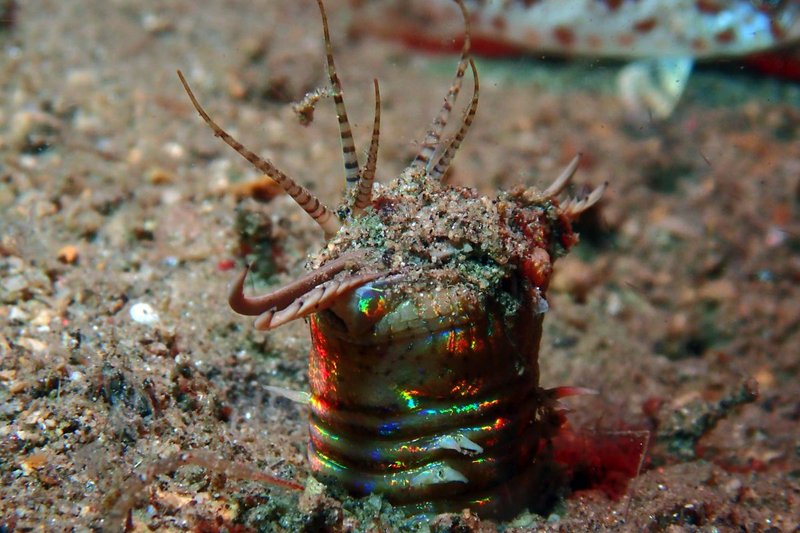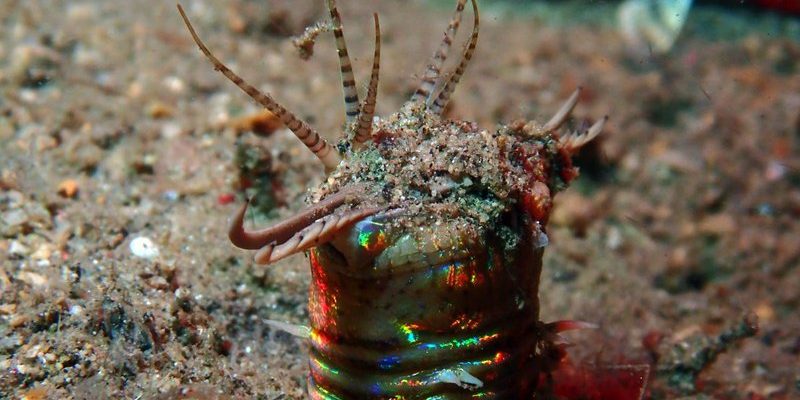
While Bobbit worms can enhance the biological diversity of your aquatic setup, they may pose challenges, especially when you’re trying to create a beautiful, harmonious rock aquascape. So, how do you safely incorporate these intriguing worms while ensuring your aquascaping vision remains intact? In this article, we’ll explore the relationship between Bobbit worms and rock aquascaping, all while providing you with essential safety tips to help you navigate these waters.
What Are Bobbit Worms?
Bobbit worms, scientifically known as *Eunice aphroditois*, are marine annelids that can grow to impressive lengths—some reaching over three feet! Think of them as nature’s little architects, spending their lives buried in the substrate of the ocean floor with only their heads peeking out. This behavior helps them ambush unsuspecting prey, which can be quite a surprising encounter for fish and crustaceans alike.
You might be wondering how these little predators find their way into home aquariums. Bobbit worms are often introduced unintentionally through live rock or sand added to your tank. This can happen when you’re setting up your rock aquascape, aiming to create that perfect underwater scene. The good news is that, while they can be sneaky, they also play a critical role in your aquarium’s ecosystem by helping clean up detritus.
Rock Aquascaping Basics
Creating a rock aquascape is like building a miniature landscape underwater. It’s about arranging rocks to create visual interest, hiding spots for fish, and open spaces for swimming. A well-designed aquascape can provide a natural habitat for various aquatic life, including your new Bobbit worm friend.
Here are a few key principles to keep in mind when planning your rock aquascape:
- Layering: Aim for different heights and shapes to create depth. Think of it as building a hill with some boulders on the side.
- Negative Space: Allow empty areas for fish to swim freely. Too many rocks can make your aquarium feel cramped.
- Natural Placement: Arrange rocks in a way that mirrors how they might appear in nature, providing a more organic look.
Remember, the goal is to create a functional and visually appealing setup that benefits all your aquatic inhabitants, including any hidden Bobbit worms.
Why Safety Matters with Bobbit Worms
Here’s the thing: while Bobbit worms can contribute positively to your aquarium’s ecosystem, they can also pose risks, especially to your fish and other invertebrates. Their bite, though not dangerous to humans, can be quite painful and damaging to smaller marine life. So, understanding their behavior and needs is essential when creating your aquascape.
If a Bobbit worm feels threatened, it can become aggressive, which is not what you want in a peaceful aquarium environment. You might find that they can overpower smaller or weaker fish. This can lead to stress in your tank, making it crucial to monitor your aquarium inhabitants carefully.
Safety Tips for Introducing Bobbit Worms
To ensure a harmonious environment for all your aquatic life, follow these safety tips when introducing Bobbit worms into your rock aquascape:
- Quarantine: If possible, quarantine new live rock or sand for a few weeks before adding it to your main tank. This helps uncover any hidden invaders.
- Observe Behavior: After introducing Bobbit worms, keep a close eye on your fish. If you notice any aggression or stress, you may need to rethink their placement.
- Provide Hiding Spots: Make sure there are plenty of caves and crevices where both Bobbit worms and fish can retreat safely.
By taking these precautions, you can enjoy the unique benefits of Bobbit worms while minimizing the risks involved in your aquascaping endeavor.
Best Practices for Rock Aquascaping with Bobbit Worms
Integrating Bobbit worms into your aquascape requires a bit of finesse and attention to detail. Here are some best practices to keep your aquarium thriving:
- Choose the Right Substrate: Use fine sand or gravel that allows for easy burrowing. This not only helps Bobbit worms thrive but also supports the overall ecosystem of your tank.
- Stability Matters: Ensure that your rock structure is stable and won’t collapse. A toppled rock can crush your Bobbit worm or cause shifts in your carefully arranged aquascape.
- Regular Maintenance: Clean your tank regularly to prevent algae buildup, which can be detrimental to both the worms and your fish. Test the water conditions frequently to maintain a healthy environment.
With these practices in place, you’ll create a safe, enjoyable environment that showcases the beauty of both your rock formations and your Bobbit worms.
Creating a rock aquascape can be a rewarding journey, especially when you embrace the challenges that come with it, like introducing Bobbit worms. Understanding their behavior and needs ensures you create a safe and visually striking environment for all your aquatic life. Remember, aquascaping is an art form—each decision shapes your underwater masterpiece.
So, take your time, be patient, and remember to enjoy the process. Whether you’re a seasoned aquarist or just starting, the world of aquascaping offers endless opportunities for creativity and harmony. By following these safety tips, you’ll not only protect your fish but also enhance the beauty of your underwater world. Happy aquascaping!

